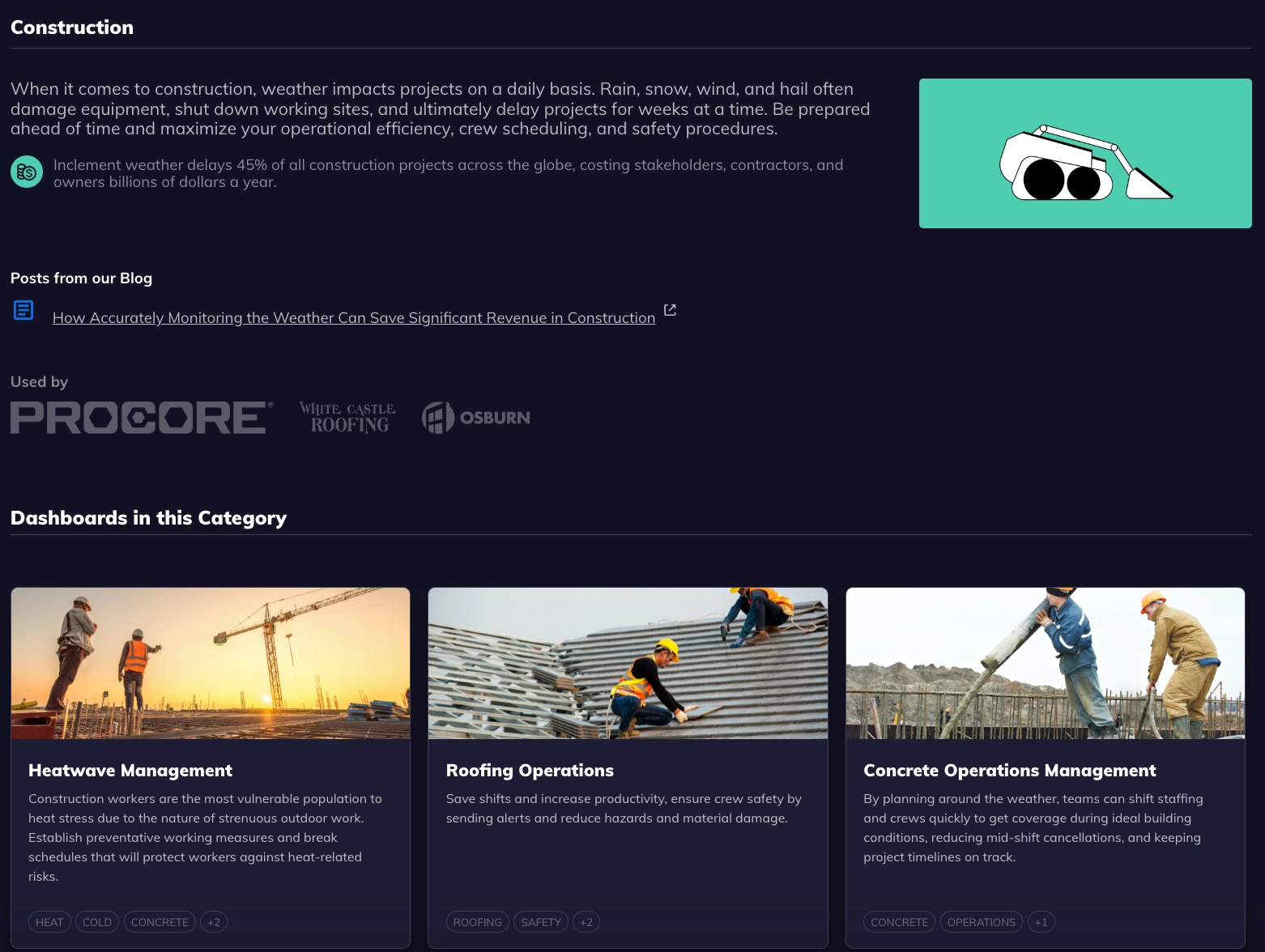TL;DR:
- Weather poses various threats to construction projects, impacting materials and equipment in different ways.
- Weather intelligence can help protect assets by providing advance alerts and adaptive scheduling.
- Implementing site-specific weather protocols and maintenance schedules can minimize damage and downtime.
- Proactive planning and protective measures based on weather data enhance project efficiency and safety.
- Embracing weather intelligence is crucial for navigating unpredictable weather patterns in future construction projects.
In this series of articles on the pivotal role of weather intelligence in construction, we’ve explored how advanced weather forecasting and dynamic response strategies enhance project management and site safety.
Continuing from where we left off in discussing the enhancement of construction site safety, this third article shifts our focus to a critical aspect of weather resilience: protecting construction materials and equipment from adverse weather conditions.
This blog will provide construction professionals with actionable strategies for safeguarding their most valuable assets against the weather’s unpredictability, preventing costly delays and damage.
What Weather Risks Does Construction Face?
Weather poses a multifaceted threat to construction projects, with various conditions affecting materials and equipment in different ways. Did you know that over the next 40 years, it is estimated 230 billion square meters of new infrastructure will be built. At the same time, it is predicted that climate change will only progress and cause weather to become more volatile, negatively impacting ever sector.
Here’s how weather impacts construction worksites:
- Rain and Flooding: Water can cause significant damage to construction materials, leading to mold, corrosion, and weakening of structural integrity. Equipment, too, is susceptible to water damage, affecting electrical systems and engines.
- Wind: High winds can displace or damage materials and even cause unsecured equipment to topple or become hazardous projectiles.
- Heat and UV Exposure: Prolonged exposure to high temperatures and ultraviolet (UV) light can degrade materials like plastics, rubber, and certain types of wood, affecting their durability and performance. Heat also affects the ability to pour concrete and use roofing material.
- Cold and Freeze-Thaw Cycles: Extreme cold and freeze-thaw cycles can crack or break materials such as concrete, masonry, and piping. Equipment may also suffer from fluid freezing and battery or mechanical issues in low temperatures. Colder temperatures prevent cement pouring.
Each of these conditions not only threatens the immediate safety and integrity of materials and equipment but also impacts the project’s timeline and budget due to potential delays, repairs, or replacements.
With weather data, constructors can recognize these risks as the first step in devising strategies to mitigate them.
Protecting Construction Equipment with Weather Intelligence
Did you know that you can use weather intelligence to protect your materials and equipment from damage? By incorporating weather forecasting into your project management strategy, you can stay one step ahead of potential hazards and keep your assets safe.
A large-scale construction project in the southeastern United States provides a compelling example of how effectively applying weather intelligence can protect materials and equipment, ensuring project continuity and safety.
This region, known for its unpredictable weather, including sudden thunderstorms and hurricanes, poses significant challenges to construction operations.
Project Overview:
- Location: Southeastern United States
- Project Type: Mixed-use development
- Duration: 2 years
- Key Challenges: High variability in weather conditions, including the risk of hurricanes and sudden thunderstorms.
Weather Intelligence Implementation:
The project team integrated a sophisticated weather intelligence system that provided detailed forecasts, real-time alerts, and historical weather data analysis. This system became central to their daily operations and long-term planning, particularly in safeguarding materials and equipment.
Strategies Employed:
- Advance Weather Alerts: The team leveraged crew-wide weather alerts to get early warnings about incoming severe weather, allowing them to prepare and protect the site. This included securing loose materials and covering sensitive equipment.
- Weather-Adaptive Scheduling: Utilizing predictive weather data, the team was able to dynamically adjust weather days to mitigate the impact of adverse weather. Work requiring dry conditions was prioritized during forecasted clear periods, while indoor activities were scheduled during rainy forecasts.
- Preventative Maintenance and Protection: Before the onset of the hurricane season, all equipment underwent thorough checks and weather-proofing, ensuring functionality during and after storms. Emergency weather response kits were strategically placed across the site.
Outcomes:
- Reduced Material Damage: Proactive measures significantly minimized material losses to weather exposure
- Minimized Downtime: Despite several severe weather events, the project experienced minimal downtime thanks to preemptive scheduling and swift protective actions.
- Enhanced Safety: The advance planning and preparedness measures ensured no weather-related injuries on site, highlighting the effectiveness of the safety protocols.
By proactively applying weather data to plan and protect the project, the team not only safeguarded their materials and equipment but also maintained an efficient, safe work environment despite the unpredictable climate.
Proactive Planning and Scheduling
- Advance Weather Alerts: Utilize weather intelligence platforms to receive advance notifications about potential severe weather events, allowing for timely protective actions such as covering materials or securing equipment.
- Weather-Adaptive Scheduling: Adjust work schedules based on weather forecasts to avoid exposure of sensitive materials and equipment to harmful conditions, such as heavy rain or extreme temperatures.
Customized Protective Measures
- Site-Specific Weather Protocols: Develop and implement site-specific protocols for weather events, informed by historical weather data and predictive analytics. For instance, in areas prone to high winds, establish a routine for securing lightweight materials and equipment.
- Material Storage and Handling: Use weather forecasts to plan for the optimal storage of materials, considering factors like humidity, temperature, and UV exposure. This might involve moving materials to covered or climate-controlled storage ahead of adverse weather.
Equipment Maintenance and Protection
- Preventative Maintenance Schedules: Align equipment maintenance schedules with weather forecasts to ensure all machinery is weather-proofed and functional, reducing the risk of weather-related breakdowns.
- Emergency Weather Response Kits: Equip machinery and operational sites with emergency weather response kits, including protective coverings and emergency repair tools, based on anticipated weather conditions.
Businesses not only prevent loss and damage by applying weather intelligence they also enhance overall project efficiency and safety. The strategic use of weather data enables construction teams to stay ahead of the weather, minimizing disruptions and maintaining project momentum regardless of the climatic challenges encountered.
The Future of Weather Intelligence for Construction
Using weather intelligence strategically in construction not only enhances the protection of materials and equipment but also contributes to overall project success. Embracing these technologies and approaches is crucial for the construction industry to navigate the challenges posed by increasingly unpredictable weather patterns, ensuring resilience and sustainability in future construction projects.
To learn more about how weather intelligence can transform your project’s operations, check out the Tomorrow.io product overview below.

















